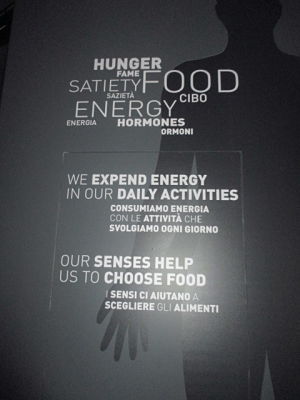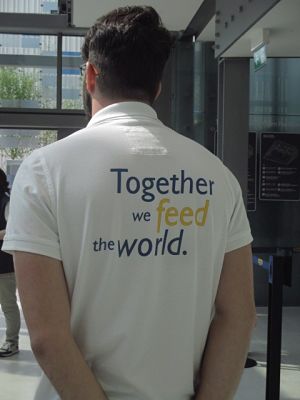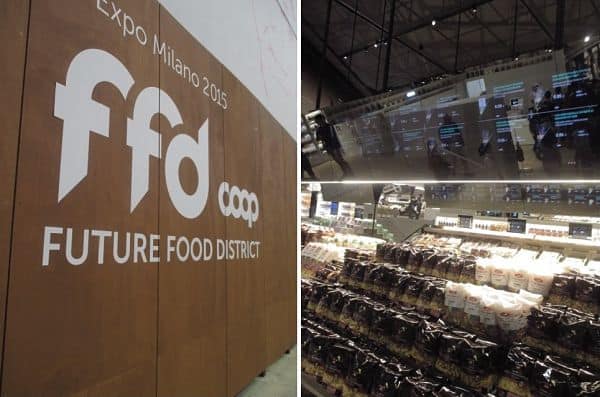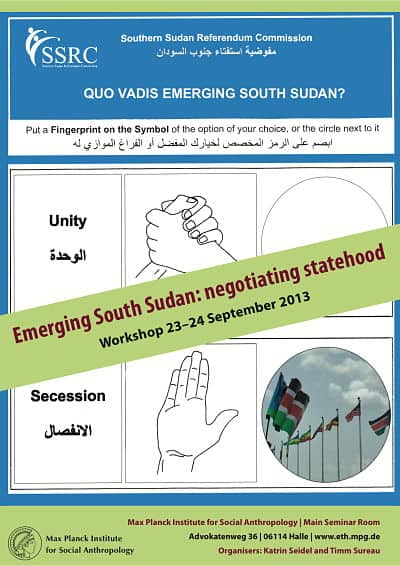The subject of EXPO 2015 is “Feeding the Planet, Energy for Life”, which coincides with the “European Year for Development”. The European page contains the slogan “How can each make a difference?” Their suggestion: “Look at the ethical aspects of the goods you buy, labels on your food (are the workers paid their fair share?); cosmetics (are they not tested on animals and do not harm nature?), etc.” [1]
 These statements remind one of Malthus, the economic demographer of the 18th century whose famous 1798 text titled An Essay on the Principle of Populations [2] is seemingly becoming popular once again, albeit in a new technological context. Having worked with the text recently, my walk through the EXPO 2015 became a conversation between the Malthus theorem and contemporary ideas of demographical and food developments.
These statements remind one of Malthus, the economic demographer of the 18th century whose famous 1798 text titled An Essay on the Principle of Populations [2] is seemingly becoming popular once again, albeit in a new technological context. Having worked with the text recently, my walk through the EXPO 2015 became a conversation between the Malthus theorem and contemporary ideas of demographical and food developments.
Let us start with a word on Malthus and his concerns for ‘the poor’ of 18th century Britain: Sir Thomas Malthus was born into an aristocratic family, received a private education, later studied economics, and eventually came to hold the first economic demographer professorship in Britain. His privileged life led him to reflect on the poverty around him, and he recorded these thoughts in an essay on the principle of populations. Although he later revised some of these ideas while developing others, the text has remained a historically crucial document introducing a new view on society. Among others, Charles Darwin used Malthus’ argument of demographic change and food regimes for his ideas of selection.
Malthus saw a direct relationship between population growth and food supply, and identified the imbalance between these two factors as the main source of poverty.
The main problem, according to Malthus, was that population increases arithmetically, while the food supply could only increase geometrically. Thus, poverty, war and famines were inevitable if people did not reduce the number of children they were having by controlling fertility. Fertility control would, however, require the poor to become more concerned about their responsibility to feed their family and to reduce the number of children they were having. If people were unable to control their fertility themselves (preventive checks), famines, wars, epidemics and other catastrophes (positive checks) would organically reduce the populations in order to reach equilibrium again. Unlike his colleague Mr. Godwin, with whom his article engages, Malthus did not believe that people would be able to balance fertility with agriculture.
 Since Malthus, the idea that the rich West is responsible for managing the food supply for the poor has remained the primary development concern for international organizations that are increasingly handing over the task to agriculture and food companies. Malthus never expected technology to advance at its current pace, which has led to the ability to feed many more people than he ever imagined possible.
Since Malthus, the idea that the rich West is responsible for managing the food supply for the poor has remained the primary development concern for international organizations that are increasingly handing over the task to agriculture and food companies. Malthus never expected technology to advance at its current pace, which has led to the ability to feed many more people than he ever imagined possible.
So why do we still link technological developments in food production to the need to feed the “masses of poor” in the global south? If the Malthus theorem has proven irrelevant and food production develops independent of poverty, how is it that multinational companies still use this seemingly intrinsic relationship as a successful marketing strategy?
A walk through the EXPO can convince anyone that food industries target two groups: the individualized Western consumer, and the “poor masses” that need to be fed.
Countless slogans constantly remind the EXPO visitor that agricultural companies work to improve the world: “Nestlé: Good Food, Good Life. Creating Shared Value”. Further, the Belgian pavilion draws scenarios of natural catastrophes and demography on the floor, predicting that crises and floods will occur as the world’s population increases.

Malthus seems to continue to influence companies that develop technologies in the global north in order to feed the global south: the rich that look after the poor masses. While demography has remained a critical issue left to nation states, food can be discussed on a global scale using the demographic argument. Thus, feeding the poor has remained the main justification – at least for the public – for multinationals’ technological developments.
A closer examination of Nestlé’s catalogues that are available at the EXPO is worthwhile here. Nestlé is certainly one of the more successful multinationals who serve “more than 1 billion” consumers per day, as their catalogue explains. The company maintains 442 factories worldwide and include in their program a claim to improve nutrition, sustainability and human working conditions, all of which are part of shared values. While it is not clear what “shared values” Nestlé refers to (Is it the creation of a global culture of Nestlé consumption?) its social engagement presented in the catalogue along with technological developments goes far beyond what one would expect of a food company. Indeed, in the report Nestlé appears to be an international organization that cares for environmental sustainability, rural development, human rights and compliance, stakeholder engagement, nutrition, water, etc., more than it does for its profits. Like human rights, Nestlé is spread all over the world as the solution to nutritional problems and wishes to establish a cultural community of shared values – Nestlé values. This reminds one of Coca-Cola’s and McDonald’s cultural imperialism; of course the EXPO features a McDonald’s restaurant and Coca-Cola has a pavilion in which it presents its “healthy beverage”.
The information on EXPO 2015 carries two messages that polarize the world in a way that is alarmingly similar to the last century: first is the Western aim to develop the poor and hungry global south with technology, and the second is that multinationals care about and actually consider individuals’ health and moral values.
The individualization of the food supply is the main issue for the global north. The consumer wants to know where their product comes from, who produced it, and what exactly it contains. Thus, the future supermarket (in the Future Food District) in which the visitor can do some shopping displays extensive details above the product. Considering that Europeans spend less and less time shopping and cooking, I wonder who will take the time to study each product in such depth. But for our knowledge society it is not so much the content – unless it is used to address serious health issues – that counts, as much as the illusion that we know or could potentially know everything about the products we consume.
Why has so much been invested in making products traceable? Since fair trade has uncovered the injustices behind food production, many people demand to have labels that certify fair trade products. This demand seems to be a powerful tool in the hands of consumer; technology now individualizes product chains, allowing the consumer to feel they are both buying fair products and also paying attention to their health. The screens above the products provide extensive information about the products’ country and even the farm of origin, and gave me, a potential consumer, the feeling of buying goods right out of a global chain; this created the illusion that I personally oversee the chain myself, and hence also the fairness of production.
 A small pavilion in the same area contains a video simulation explaining how food could be optimized so that consumers can meet precise dietary requirements and also maintain a broad choice of dishes. Food here is presented as prepared dishes with known amounts of ingredients and their specificities; thus, food becomes part of the optimized human being in the rich north. All this optimization, the visitor learns, is undertaken by specialists in laboratories and computer centres that control the chain all the way from the requirements of the producers, to the retailers, and then to the consumer.
A small pavilion in the same area contains a video simulation explaining how food could be optimized so that consumers can meet precise dietary requirements and also maintain a broad choice of dishes. Food here is presented as prepared dishes with known amounts of ingredients and their specificities; thus, food becomes part of the optimized human being in the rich north. All this optimization, the visitor learns, is undertaken by specialists in laboratories and computer centres that control the chain all the way from the requirements of the producers, to the retailers, and then to the consumer.
Moving away from the technologies behind future food supply towards the small countries of the global south, it seems as if the future has vanished. Instead, traditions are presented as material cultures that resist time and change but often simply respond to the western longing for exotism. We are not shown the poor that the western multinationals want to feed, but rather colourful inventions of cultures meant to attract the visitor. One day is not enough to explore the countless creative inventions of the many pavilions. But not all countries have engaged in this colonial relationship of the technological west versus the traditional south; the Afghan pavilion does not address any of these expectations: the small room with glimmering plastic and eight glass display cases, each one containing a plate with dried fruits and stone hand-made jewellery, provokes the visitor.

Upon entrance, one is offered a tea of saffron and an “Afghan Food: cooking guide”. Wait a moment. This is Afghanistan? One of the countries in which the development industry has been active “saving the people from hunger” is offering a book of the most diverse dishes termed “amazingly real Afghanistan”? Interestingly, the dishes presented move far beyond the reduction of one traditional food, and instead remind one about the pleasure of food preparation and consumption, including the creative play with tastes and the social dimension of food. The booklet seems outdated beside the “futures of nutrition” that sanctions food that may follow the rule of taste before health, the social before the individual.
The EXPO is full of extremes, and Malthus is at every corner, at times more actualized than ever and at times bluntly refuted by the creativity of ordinary people.
The world is hence not yet only filled with an obsession about getting the right norms of nutrition to people worldwide. Rather, food remains an issue for individuals just as much as for companies, multinationals, and regimes. Malthus’ fear of overpopulation and famines has not been overcome, but the many organisations dealing with this issue provide hope that the multinationals’ technologies will not appropriate “the problem” and merely reduce the world’s concern for food and nutrition to just a business plan.
Footnotes
[1] European Year for Development, a link takes the reader to Sustainable Table
[2] Malthus, T.R. 1999 [1798]. An Essay on the Principle of Population. Oxford: Oxford University Press.
All photos are courtesy of Sophie Roche.





